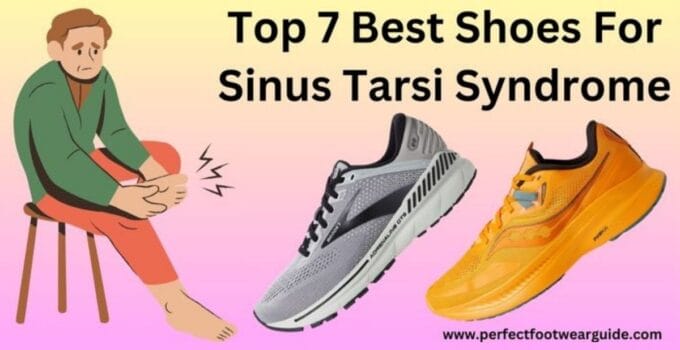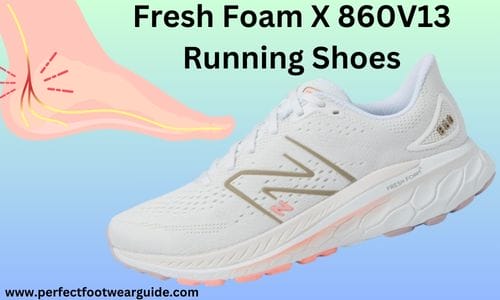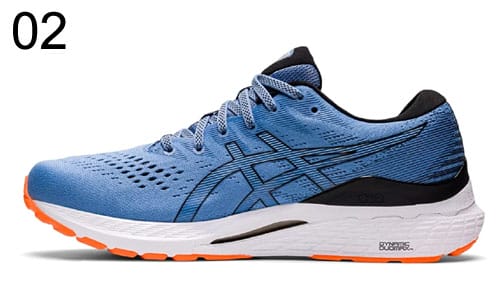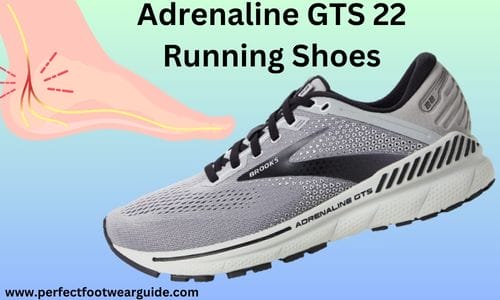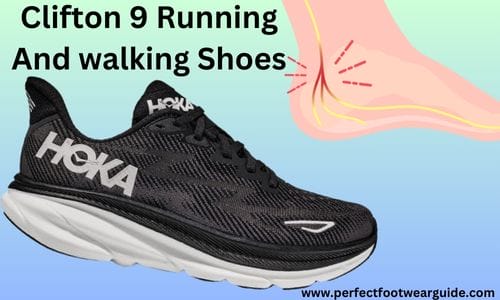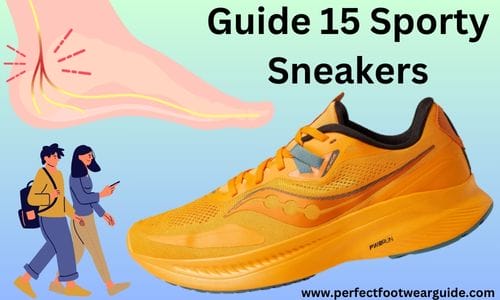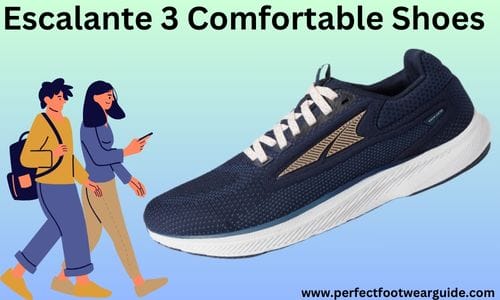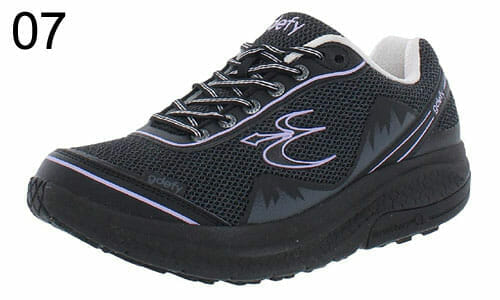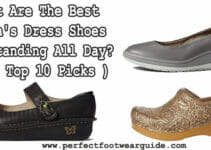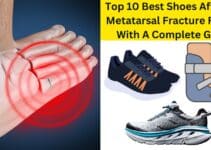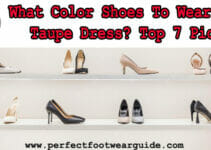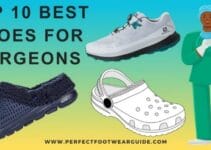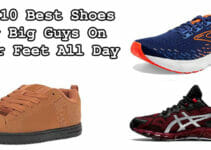Discovering the best shoes for Sinus Tarsi Syndrome can alleviate discomfort and support proper foot health. When dealing with STS, characterized by pain and inflammation within the sinus tarsi, careful consideration must be given to footwear choices to mitigate symptoms effectively. This delves into the essential factors to consider when selecting shoes for Sinus Tarsi Syndrome. It provides expert recommendations to ensure optimal comfort and support. Unlock relief and enhance mobility with the right pair of shoes tailored to address the unique needs of STS.
Understanding the Symptoms of Sinus Tarsi Syndrome
Sinus Tarsi Syndrome can be a mouthful, but understanding its symptoms does not have to be complicated. This condition affects a specific part of your foot and can cause discomfort. Here’s a simple guide to help you recognize what’s going on:
1- Pain on the Side: One of the most common signs is pain outside your ankle. It might feel like a constant ache or sharp twinge.
2- Tender to Touch: If you gently press on the area around your ankle, it might hurt. It is like having a bruise, which is sensitive when you touch it.
3- Swelling: Your ankle might puff up slightly, making it look swollen. It is not always easy to notice, but it is a sign to watch for.
4- Unstable Feeling: Some people say their ankle isn’t relatively as steady as it should be. It can make you feel wobbly.
Suppose you are experiencing pain, tenderness, swelling, or an unsafe feeling in your ankle. In that case, you might be dealing with Sinus Tarsi Syndrome. If you suspect this, it is always a good idea to see a healthcare professional for a proper diagnosis and guidance on managing it.
How To Diagnose Sinus Tarsi Syndrome?
Diagnosing Sinus Tarsi Syndrome is like solving a puzzle. It’s all about understanding the signs and putting the pieces together. Here’s how doctors do it:
1- Physical Examination: The first step is talking to your doctor. They will ask you questions about your pain and any injuries. They will also gently touch and press on your foot to find the painful spots.
2- Range of Motion Tests: Your doctor may ask you to move your foot differently. This helps them see how your foot works and if it is painful.
3- Imaging Tests: Sometimes, doctors use X-rays or MRIs to take pictures of your foot. These images can reveal any issues in your foot’s structure.
4- Rule Out Other Conditions: Sinus Tarsi Syndrome has similar symptoms to other foot problems. So, your doctor will ensure it’s nothing like a sprain or fracture.
5- Diagnostic Injection: Sometimes, your doctor might use a numbing injection in the sinus tarsi area. If your pain goes away with the injection, it’s a sign that you might have Sinus Tarsi Syndrome.
Remember, it is essential to see a doctor for a proper diagnosis. They will help you determine if you have Sinus Tarsi Syndrome and the best treatment.
Importance of Proper Footwear For Sinus Tarsi Syndrome
The importance of having the right shoes for Sinus Tarsi Syndrome cannot be stressed enough. This condition can cause pain and discomfort in the lateral side of your foot, and wearing the wrong footwear can worsen it. Here’s why proper shoes matter:
1- Comfort: Shoes designed for Sinus Tarsi Syndrome provide the comfort your feet need. They have features like cushioning and arch support that help reduce pain and make walking easier.
2- Support: These shoes offer the support your feet require to stay stable. The lateral side of your foot gets the extra help it needs, reducing strain and discomfort.
3- Pain Relief: The right shoes can help relieve the pain associated with Sinus Tarsi Syndrome. They cushion your feet and distribute the pressure more evenly.
4- Preventing Further Issues: If you don’t wear proper shoes, you risk worsening your condition. Ill-fitting or unsupportive shoes can lead to more pain and difficulties.
5- Better Mobility: With the proper footwear, you can move more comfortably. Walking, running, or other activities will become less painful and more enjoyable.
Having the right shoes for Sinus Tarsi Syndrome is crucial for comfort and overall well-being. They provide the comfort, support, and pain relief your feet need, helping you stay active and live your life to the fullest.
What are the Common Signs of Sinus Tarsi Syndrome?
If you have sinus tarsi syndrome, you may experience the following signs and symptoms:
- Pain in the ankle, heel, or outside of the foot.
- Tenderness or swelling in the ankle or foot.
- Difficulty walking or standing for long periods.
- Stiffness in the foot or ankle.
- Clicking or popping sound when moving the foot or ankle.
Top 7 Best Shoes for Sinus Tarsi Syndrome Reviews
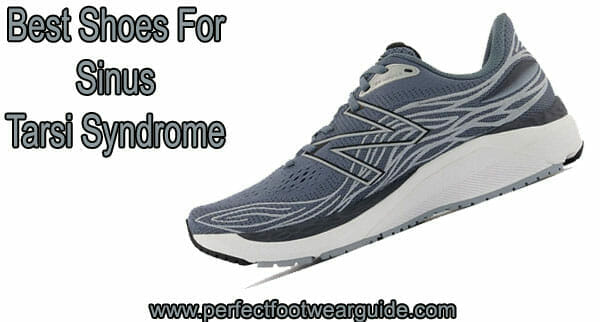
Sinus tarsi syndrome (STS) is a condition that results in pain and swelling in the sinus tarsi region of the foot. The sinus tarsi is a small space between the talus (ankle bone) and the calcaneus (heel bone). This region is filled with fluid and is surrounded by ligaments, tendons, and muscles. STS can be caused by overuse, injury, or arthritis.
STS can be treated with rest, ice, and anti-inflammatory medication. The need for surgery may arise when it is necessary to remove damaged tissue or to fuse bones.
Wearing the proper shoes is essential for people with STS. Shoes should have good arch support and cushioning to help reduce stress on the sinus tarsi region. They should also be wide enough to avoid constricting the foot.
Below are our top 7 picks for the best shoes for sinus tarsi syndrome:
1- New Balance Fresh Foam X 860 V 13 Running Shoes
Let’s talk about your sore feet. New Balance fresh foam 860v13 running shoes can relieve tingling, numbness, and other symptoms associated with sinus inflammation. These shoes are designed with breathability and support in mind.
They have fresh foam midsole cushioning for lightweight yet supportive rides and an engineered mesh upper that keeps you comfortable and supported. This shoe is perfect for runners of all levels and will help relieve your symptoms.
The running shoes are high-performance, supportive training shoes featuring our first medial post to help with pronation control. This medial support provides stability in motion and helps maintain.
It is the natural alignment of your foot during activities such as running, walking, and hiking. The blown rubber outsole offers excellent rebound and adhesion. The reflective accents provide light-catching visibility at night.
It is during low-lighting conditions for runners. It is a blown-out rubber outsole at the forefoot. The reflective accents on the side of the shoe provide light that can be seen from afar, thus increasing your visibility to other people.
Pros
- Breathable and comfortable.
- Provides good support and cushioning.
- Looks great.
- Good value for the price.
- Durable.
Cons
- Not for running on hard surfaces.
2- ASICS Gel-Kayano 29 Running Shoes ( Shoes for sinus tarsi syndrome )
The ASICS Gel-Kayano 29 running are the shoes of choice for athletes who want a shoe to help them qualify for their next big running race. The update to this popular style features an engineered mesh upper.
These are breathable and lightweight. It is a redesigned external heel counter that helps keep the foot stable while providing more comfortable strides. This running shoe has been designed with a focus on stability.
It has an improved heel counter and rubber sole, which results in more stability and comfort than other styles. This is the perfect running shoe for a more natural stride.
Who suffers from sinus tarsi syndrome, or any runner who wants a comfortable fit with added support. These are the best shoes for sinus tarsi syndrome. ASICS Gel-Kayano running shoes are designed to offer a comfortable and streamlined fit.
These men’s running shoes promote efficient energy transfer with each stride. The dynamic duo, the max support system, provides stability and support during every stride. The 3D space construction enhances compression at the footstrike to improve your overall performance.
Pros
- The shoes are designed to help with sinus tarsi syndrome.
- The shoes have a rubber sole, which helps with durability.
- A redesigned external heel counter provides more stability and comfort during strides.
- A 3D space construction feature enhances footstrike compression for those with sinus tarsi syndrome.
- The shoes come in a wide fit to accommodate different feet.
Cons
- The shoes may only be suitable for some due to their rubber sole, which can be difficult on certain surfaces.
3- Brooks Adrenaline GTS 22 Shoes
Are you looking for the best shoes for sinus tarsi syndrome? The Brooks Adrenaline GTS 22 shoes are perfect for you. These shoes are comfy, supportive, and great for your feet. I will tell you why they are so awesome!
Super Comfy: These shoes have soft cushioning. This means your feet will feel like they are on clouds! People with sinus tarsi syndrome need extra comfort, and these shoes deliver.
Fantastic Support: Good support is essential for people with sinus tarsi syndrome. These shoes have a unique feature called GuideRails. This helps your feet stay in the right place when you walk or run. Your feet will feel stable and secure.
Perfect Fit: The Brooks Adrenaline GTS 22 shoes come in different sizes and widths. This means you can find the ideal fit for your feet. A great fit helps with sinus tarsi syndrome and keeps your feet happy.
Super Soft Midsole: The updated midsole in the Brooks Adrenaline GTS 22 is made of 100% DNA LOFT cushioning. This means you’ll experience a soft and smooth ride every time you run. Your feet will thank you for the extra comfort!
Easy Flow from Landing to Toe-Off: The soft midsole works with the Segmented Crash Pad to make your runs easier. They help your feet flow smoothly from landing to toe-off. Running has never been this effortless!
Quality Materials: The Brooks Adrenaline GTS 22 shoes are made with a mix of textile and synthetic materials for the upper part. This makes them solid and durable. The textile lining and insole keep your feet cozy, while the synthetic sole ensures a good grip.
Imported for Excellence: These amazing running shoes are imported, which means they are made with high-quality standards in mind. You can trust the Brooks Adrenaline GTS 22 as a reliable, long-lasting choice for everyday runs.
The Brooks Adrenaline GTS 22 shoes are the best choice for people with sinus tarsi syndrome. They are comfy, supportive, and have a perfect fit. Try them out and feel the difference!
Pros
- It is 100% DNA LOFT cushioning in the midsole.
- These shoes are segmented Crash Pad for effortless running.
- It has a textile and synthetic upper with a textile lining and insole.
- Available in different sizes and widths.
- Imported for excellence.
Cons
- It may be more expensive than other running shoes.
4- Hoka One Clifton 9 Running Shoes ( Best running shoes for sinus tarsi syndrome )
Are you looking for the best shoes for sinus tarsi syndrome? The Hoka One Clifton 9 Running shoes might be just what you need. These super comfy shoes offer great support, making them a top choice for people with foot problems.
The American Podiatric Medical Association has given these shoes their Seal of Acceptance. This means the shoes suit your feet and help keep them healthy. Only shoes that are tested and approved by a group of expert foot doctors can get this particular seal.
Wearing the Hoka One Clifton 9 Running shoes while running is a great experience. They have a soft, bouncy feel that helps make running more fun. The shoes also have a unique knit top that lets your feet breathe easily.
Hoka One shoes are made with recycled materials to help the environment. They come with a soft footbed that you can remove if you need extra cushioning. The shoes also have a lace-up design to keep your feet secure.
One cool feature of these shoes is the Early stage Meta-Rocker. This helps make running smooth and easy. These Running shoes also have a special pull tab, a soft collar, and a tongue that makes them extra comfy.
The shoes have the Hoka One One name on the back, so you know they are a trusted brand. They have a round toe shape, which gives your feet plenty of room. Lastly, the shoes have a firm rubber bottom that gives you an excellent running grip.
The Hoka One Clifton 9 Running shoes are a top choice for people with sinus tarsi syndrome. They are comfy, supportive, and approved by foot doctors. Give them a try and enjoy a better running experience.
Pros
- It promotes good foot health and is approved by expert foot doctors.
- It makes running more enjoyable and comfortable.
- It keeps your feet cool and dry during activity.
- These allow for additional cushioning customization.
- It provides a smooth and easy running experience.
- It ensures a secure fit for your feet.
- It offers traction and durability for various surfaces.
Cons
- It might be more expensive than other running shoe options.
5- Saucony Guide 15 Sneakers
Are you looking for the perfect shoes to help with sinus tarsi syndrome? Look at The Saucony Guide 15 Sneakers are just what you need. These stylish and comfy shoes have special features to support your feet and help with this condition.
These sneakers have an excellent design called HOLLOW-TECH. This helps guide your steps without making the shoe heavy. The shoes are made of solid materials that feel good on your feet. They also have a lace-up closure, so they stay snug on your feet.
These sneakers have a round toe and a soft collar and tongue. This gives your feet a comfy feeling. The Saucony logo is on the language, showing off the great brand.
One of the best parts of these sneakers is the PWRRUN+ midsole. It is light and bouncy, giving you a soft and cushioned feeling when you walk or run. The shoe’s outsole is robust and has excellent grip so you won’t slip.
The Saucony Guide 15 Sneakers are an excellent choice for people with sinus tarsi syndrome. With their stylish design, comfy fit, and unique features, your feet will feel great all day.
Pros
- It has a HOLLOW-TECH for guided, lightweight support.
- These shoes are made of comfortable materials.
- It is a lace-up closure for a secure fit.
- This is a round toe and padded collar for added comfort.
- It has a PWRRUN+ midsole for soft cushioning.
- These sneakers are durable, high-traction outsole.
Cons
- Only suitable for some types of activities.
6- Altra Escalante 3 Shoes ( Best shoes for tarsal boss )
Are you looking for the best shoes to help with sinus tarsi syndrome? The Altra Escalante 3 shoes may be the perfect fit for you. They are super comfy and have some fantastic features. Let’s learn more about these shoes and why they’re great for people with sinus tarsi syndrome.
The Altra Escalante 3 shoes are made from soft textile and synthetic solid materials. This makes the shoes light yet durable. They have a textile lining and insole, making them extra cozy. The lace-up closure means you can adjust the fit just right.
They have a pull-on style, making them easily slip on and off. These shoes have an excellent round-toe design, making them look stylish. They also come with a mesh print so your feet can breathe. The padded tongue and collar give you even more comfort.
And guess what? The insole is removable, so you can replace it with one that fits your needs even better. The synthetic outsole on the Altra Escalante 3 shoes makes them long-lasting. They are made to last, so you don’t have to worry about buying new shoes all the time.
These shoes are also imported, which means they’re made with high-quality materials. So, are the Altra Escalante 3 shoes the best for sinus tarsi syndrome? They just might be! These shoes have a comfy design, incredible features, and durable materials.
These shoes are an excellent choice for anyone with this condition. Give them a try, and they’re just what you need to feel better on your feet.
Pros
- Soft textile lining and insole provide extra coziness.
- It is a lace-up closure that allows for a customized fit.
- Mesh print design ensures proper air circulation for your feet.
- A padded tongue and collar offer additional comfort.
- Customize your shoes by replacing the insole with one that suits your needs.
- Synthetic outsole and materials ensure the boots last longer.
- The round-toe silhouette and mesh print give it a fashionable look.
Cons
- Some people may prefer locally-made products.
7- Gravity Defyer Mighty Walk Sneaker
Suffering from sinus tarsi syndrome? The Gravity Defyer Mighty Walk sneakers are the best shoes for you! These sneakers provide the comfort and support you need, making them the top choice for anyone with this condition.
Here’s why they are the best for sinus tarsi syndrome:
Advanced support: The VersoShock and VersoCloud spring cell sole offer full-sole shock absorption. It helps to align your body and reduce the strain on your feet.
Easy to wear: With a slip-on design and lace-up closure, these sneakers are simple to put on and take off.
Breathable materials: The nylon mesh and polyurethane upper keep your feet cool and comfortable.
Comfortable lining: The nylon mesh lining inside the shoe adds extra coziness.
Custom-fit: The removable polyurethane footbed allows you to adjust the cushioning for perfect comfort.
Durable construction: The EVA midsole and synthetic outsole ensure your sneakers are built to last so that you can enjoy pain-free walks for a long time.
No more struggling with sinus tarsi syndrome. Discover the ultimate comfort and support with Gravity Defyer Mighty Walk sneakers. Give your feet the relief they deserve!
Pros
- It has VersoShock and VersoCloud technology for body alignment and reduced foot strain.
- These are slip-on designs and lace-up closures for convenience.
- Nylon mesh and polyurethane upper for incredible, comfortable feet.
- It has a nylon mesh lining for added coziness.
- Removable polyurethane footbed for adjustable cushioning.
- EVA midsole and synthetic outsole for long-lasting wear.
Cons
- The sneakers may be more expensive than other options on the market.
Top 7 Best Shoes For Sinus Tarsi Syndrome Reviews In Video
Shoe Types for Different Activities
The right shoe type can vary depending on your lifestyle and activities. Whether you’re into running, walking, or cross-training, we’ve covered you with specific recommendations for each category.
1- Running Shoes for Sinus Tarsi Syndrome
- If you love running, you need running shoes that offer:
- Extra cushioning to reduce the impact on your feet.
- Good arch support to prevent discomfort.
- Lightweight design for easy movement.
- Excellent traction for stability.
2- Walking Shoes for Sinus Tarsi Syndrome
For daily walks, opt for walking shoes that provide:
- Maximum comfort and support.
- Cushioning for a pain-free stroll.
- Stability to keep your feet steady.
3- Cross-Training Shoes for Sinus Tarsi Syndrome
If you engage in various activities, cross-training shoes are versatile and offer:
- Support for different movements.
- Comfort for diverse workouts.
- Flexibility to accommodate various exercises.
Choosing the right shoe type for your favorite activities can help you stay active while managing Sinus Tarsi Syndrome effectively.
How To Choose The Best Shoes For Sinus Tarsi Syndrome?
Sinus tarsi syndrome is a chronic condition involving middle foot joint inflammation. So, what are the best shoes for sinus tarsi syndrome? Here, I will discuss choosing the best shoes for sinus tarsi syndrome:
1- Shoes should fit well and allow you to move easily
If they feel uncomfortable or tight, they could cause strain to your foot and ankle joints. Try on different pairs of shoes until you find ones that fit comfortably. Choose shoes with thick soles and flexible enough to bend at the ankles without feeling uncomfortably tight.
2- Choose shoes with good arch support
Your feet naturally roll inward, causing your arches to collapse over time. Arch support can help prevent this from happening. Look for shoes with a firm heel counter and high-density foam padding around the midsole. High-quality orthotics may also provide additional arch support.
3- Avoid wearing shoes with slippery bottoms
Slippery shoe bottoms can lead to falls and injuries if you’re not careful. When shopping for shoes, look for those with non-slip soles.
4- Wear socks to protect your feet
Socks can wick away moisture and keep your feet dry. If you wear athletic shoes, consider purchasing lightweight walking socks to replace regular gym socks.
5- Choose durable shoes
You will wear these shoes every day, so make sure they last. Invest in long-lasting shoes that won’t fall apart after a few months.
6- Buy shoes with Velcro straps
These shoes are secure and can be adjusted to fit your feet comfortably.
7- Get fitted for orthopedic insoles
Orthopedic insoles are designed to relieve pressure points in the feet and reduce pain. They may also improve your posture while standing and walking.
8- Check out shoe inserts
Shoe inserts provide added cushioning for your feet and help distribute weight evenly throughout the shoe.
9- Consider buying a pair of boots
Boots are often sold separately from shoes; many prefer them over sneakers. Choose roomy boots to accommodate larger feet, but don’t go overboard and buy something too bulky or heavy.
10- Take care of your shoes
Keep your shoes clean and store them properly to avoid damage. Wipe off dirt and debris before putting them back on.
11- Do not forget about laces
Laces can rub against your skin and irritate sensitive areas of your feet. Try tying your laces tightly to avoid this problem.
12- Find shoes that match your outfit
Matching your outfits and shoes can make you stand out in a crowd. Make sure that whatever color you decide goes well with everything else in your wardrobe.
13- Choose shoes with breathable materials
Breathable material prevents sweat buildup, preventing odor and discomfort. Look for shoes with mesh uppers and perforated leather accents.
14- Stick with neutral colors
Neutral colors like black, brown, gray, tan, white, and olive green work well with any clothing or footwear.
15- Use a pedometer
Pedometers track how many steps you take each day. Set goals to increase the number of steps you take each week.
Making Sure Your Shoes Fit Properly
If you suffer from sinus tarsi syndrome, you must ensure your shoes fit correctly. This will help prevent further injury and provide the support and stability your feet need. Here are a few things to keep in mind when choosing shoes:
1- Make sure that there is enough room in the toe box. Your toes should not be cramped or squished inside your shoes.
2- Avoid high heels or other shoes with unstable heels. This can put unnecessary stress on your feet and ankles and worsen sinus tarsi syndrome symptoms.
3- Look for shoes with good arch support. This will help to distribute weight evenly across your feet and reduce stress on the joints and ligaments.
4- Make sure that the shoes are comfortable. You don’t want to have to break them in – they should feel good from the moment you put them on.
Should You Consider Wearing Custom Orthotic Insoles with Your Shoes?
Some factors can contribute to sinus tarsi syndrome, including flat feet, high arches, and overpronation. Wearing shoes with insufficient support can also aggravate the condition. If you have sinus tarsi syndrome, consider wearing custom orthotic insoles with your shoes.
Custom orthotic insoles are designed to provide support and cushioning for the specific needs of your feet. They can help to reduce pain and improve alignment. If you are considering wearing custom orthotics, consult a podiatrist or other foot specialist to ensure they are right for you.
How to Treat Sinus Tarsi Syndrome?
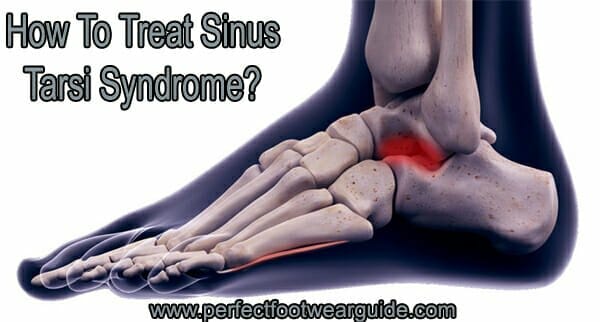
If you suffer from sinus tarsi syndrome, you should see a doctor or podiatrist first. Once you’ve been diagnosed, there are a few things you can do to treat the condition and ease your pain.
Rest: Rest is essential for healing. Avoid activities that strain your feet and ankles, and take time to rest your feet whenever possible.
Ice: Ice can help reduce swelling and inflammation. Apply ice to your feet for 20 minutes several times a day.
Compression: Compression socks or wraps can also help reduce swelling.
Elevation: Keeping your feet elevated above heart level will help reduce swelling. Prop them up on a pillow when you’re sitting or lying down.
Stretching and Strengthening Exercises: Specific exercises can help stretch and strengthen the muscles and ligaments around your ankles and feet. Your doctor or physical therapist can give you more information about these exercises.
Anti-Inflammatory Medications: Over-the-counter anti-inflammatory medications like ibuprofen can help relieve pain and inflammation.
Custom Orthotics: Custom orthotics can help support your feet and ease the pain. Your doctor can refer you to a podiatrist or orthopedist to have custom orthotics made.
Injections: If other treatments haven’t worked, your doctor may recommend injections of corticosteroids or other medications.
Surgery: Surgery may be necessary in severe cases to correct the problem.
Prevention
You can do a few things to help prevent sinus tarsi syndrome or reduce your risk of developing the condition.
Wear supportive shoes: Wearing shoes that provide good foot support can help prevent injury. Avoid high heels and other shoes that don’t offer good support.
Stretch and strengthen your ankles: Stretching and strengthening the muscles and ligaments around your ankles can help prevent injury.
Warm up before exercise: Warm up before exercise can help prevent injury. Start with light cardio to get your heart rate up, then stretch.
Cool down after exercise: Cooling down after your exercise is just as important as warming up. Do some light cardio and stretch again to help your body recover from exercise.
Conclusion
If you suffer from sinus tarsi syndrome and are looking for a good pair of shoes to help you manage the condition, then we hope this article has been of some help. We know how difficult it can be to find the proper footwear when you have this condition, so we’ve compiled a list of our top 7 picks. We hope one of these shoes will be what you’re looking for to help improve your quality of life.
FAQs about the best shoes for sinus tarsi syndrome
If you suffer from sinus tarsi syndrome, you know how debilitating the condition can be. The pain and swelling can make walking difficult, let alone standing or running. Finding the right shoes can be challenging, as many shoes are not designed with this condition in mind.
This article will answer the most frequently asked questions about the best shoes for sinus tarsi syndrome. We will also provide our top picks for the best shoes to wear if you suffer from this condition.
What is sinus tarsi syndrome?
Sinus tarsi syndrome is a condition that causes pain and swelling in the sinus tarsi region of the foot. This area is just behind the ankle bone, where the calf muscle meets the heel bone. The condition is often caused by overuse or injury to the foot, which can be very painful and debilitating.
What are some of the symptoms of sinus tarsi syndrome?
The most common symptom of sinus tarsi syndrome is pain in the sinus tarsi region of the foot. This pain is often worse with activities such as walking or running, making it difficult to stand or walk for long periods. Other symptoms include swelling in the foot, stiffness in the ankle, and weakness in the calf muscle.
What are some of the best shoes for sinus tarsi syndrome?
There are a few different types of shoes that can be helpful for people with sinus tarsi syndrome. A kind of shoe is called a stability shoe designed to support the foot and help prevent further injury.
Another type of shoe is a motion control shoe, intended to limit the foot’s pronation (rolling inward). Motion-control shoes can be beneficial for people with high arches or flat feet.
Are there any other treatments for sinus tarsi syndrome?
Besides wearing supportive shoes, a few other things can be done to help treat sinus tarsi syndrome. These include icing the foot, taking anti-inflammatory medication, and doing physical therapy exercises. Surgery is sometimes necessary for people who do not respond to conservative treatment.
5- Can sinus tarsi syndrome be prevented?
A few things can be done to help prevent sinus tarsi syndrome. These include wearing supportive shoes, avoiding high-impact activities, and staying in good shape overall. People who are overweight or have flat feet or high arches are at higher risk of developing the condition, so they must take preventive measures.
